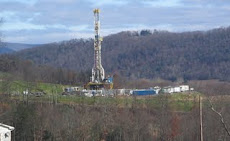The U.S. natural-gas industry, disappointed by the climate-change bill passed by the House of Representatives in June, is counting on new Democratic allies and a stepped-up lobbying campaign to push measures through the Senate that will favor gas over coal and oil.
The climate-change debate in the Senate, which is expected to involve several committees after Labor Day, comes at a critical time for the gas industry. It faces a glut that has driven natural-gas prices below $3.20 per million British thermal units, their lowest level since 2002. In addition, huge new gas discoveries in Texas, Louisiana, Pennsylvania and elsewhere have produced a surge in supply.
The House bill, known as the American Clean Energy and Security Act, focuses on "clean coal" research rather than encouraging natural-gas use. Many in the gas industry concede they were caught off guard by both the coal industry's intensive lobbying campaign and the speed with which the House acted.
"We were not prepared for the pace at which the House legislation proceeded," says Jim Hackett, chairman and chief executive of gas producer Anadarko Petroleum Corp.
But Mr. Hackett says the industry won't repeat its mistake with the Senate. He and other CEOs have formed a new lobbying group, America's Natural Gas Alliance, and pledged about $80 million to the effort, which will include a national media campaign in the fall.
The alliance's members include more than two dozen of the top natural-gas producers in the U.S., including Chesapeake Energy Corp., XTO Energy Inc. and Devon Energy Corp.
David Trice, who is chairman of both the Alliance and gas producer Newfield Exploration Co., stepped down as Newfield's CEO in May in part to focus on the lobbying effort. He says he has met with 20 senators since the group was formed in March.
The gas-industry's goals in the Senate include incentives that will encourage power companies to switch to natural gas from coal and lead truck fleets to convert to natural gas from diesel. Lobbyists will also seek to limit companies' ability to atone for their pollution via carbon "offsets," such as planting trees overseas, which reduce the incentive to switch to cleaner fuels like gas.
At a recent conference on clean energy in Las Vegas, former Vice President Al Gore, Senate Majority Leader Harry Reid and Energy Secretary Steven Chu all spoke positively about using more natural gas.
Following the conference, John Podesta, who co-led President Barack Obama's transition team last winter and who heads the liberal Center for American Progress, co-wrote a paper with former Colorado Sen. Tim Wirth advocating greater use of natural gas.
Environmental groups are also pushing the Senate to embrace natural gas as a "bridge fuel," which would allow the U.S. to move away from coal and oil faster than it could using renewable fuels alone.
"I think people are realizing that instead of gas being an afterthought, gas is a balance wheel of the new market," says Carl Pope, executive director of the Sierra Club, an environmental group.
But the gas industry must overcome major hurdles. Other energy producers are also mobilizing. A major theme of the coal industry has been the relatively stable price of coal compared with volatile natural-gas prices. Meanwhile, major natural-gas consumers, including chemical companies and many utilities, oppose increased use of natural gas because it could drive up costs.
Mr. Trice concedes that the industry was slow to recognize the need to persuade lawmakers that the U.S. can burn more gas without causing price spikes because of the new gas discoveries.
"We weren't up there telling them how things have changed over the last couple years," Mr. Trice says.
"It would've been nice if this organization existed a year ago," he adds. "But we're part of the debate today."
Write to Ben Casselman at ben.casselman@wsj.com
Printed in The Wall Street Journal, page A20 

